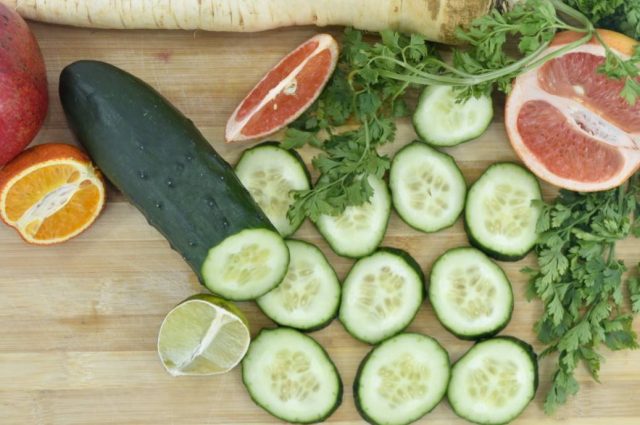Lectins are sugar-binding proteins that occur in all sorts of plants, even the ones we eat. When consumed in food, they are not harmful or toxic to humans unless the concentration is very high. Most lectin digestion occurs within 24 hours of their ingestion because our body recognizes them as threats and helps flush them out. However, about 1% of people don’t produce enough of an enzyme to adequately break down lectins and these individuals often experience unpleasant side effects such as gas, bloating, nausea, diarrhea, arthritis and migraines.
Lectins are most commonly found in grains like wheat rye and barley as well as beans, nuts, certain fruits and vegetables and dairy products. So which foods should you avoid if you want to reduce your lectin intake? Let’s discover the foods high in lectins, so you have a full knowledge what you should consume or what you should not.
- Wheat and other grains
Four of the most concentrated sources of wheat lectins are modern wheat varieties such as durum, semolina and spelt. Wheat germ agglutinin (WGA) is also found in other grains like barley, rye, rice, corn and oats.
- Beans
Lectins in beans such as soybeans and mung beans can be deactivated by cooking the beans thoroughly before eating them.
- Nuts
Nuts contain lectins that vary according to their region of origin. Brazil nuts are particularly high in lectins.
- Potatoes, tomatoes and eggplant
Grains like wheat aren’t the only foods that contain high concentrations of lectins. Tomatoes, potatoes and eggplants are also high in lectins because they’re fruits rather than vegetables.
- Dairy products
Dairy products such as milk, cheese and yogurt contain a high concentration of lectins. These proteins are most concentrated in the whey of the dairy product, which is where they’re found in highest concentrations.
- Nightshades
Other members of the nightshade family like peppers, goji berries and tomatillos also contain a high concentration of lectins.
- Chocolate
Carob is the main ingredient in chocolate substitute because it contains no caffeine. However, carob also contains high concentrations of lectins. You can make carob treats at home without any carob powder, which is sold at health food stores and online.
- Sugar substitutes
Sugar substitutes like Splenda, Equal, Sweet N’ Low and NutraSweet are all high in lectins. Sugar alcohols like xylitol are almost as high in lectins as mannitol, which is why they should be consumed only in limited quantities.
- Nightshade vegetables
Several other types of vegetables also contain a high concentration of lectins. These include cucumbers, bell peppers, chilies, mushrooms, green beans and okra. All such vegetables are among the foods high in lectins.
- Non-organic fruits
Fruits are not often associated with high concentrations of lectins but the ones that are particularly high in them are apples , pears, grapes , oranges , bananas and pineapples .
- Sprouts
Sprouts from seeds such as mung beans, alfalfa and clover are high in lectins. In fact, these proteins can be found at up to ten times the concentration in sprouted seeds than they were before sprouting.
- Green peas
Green peas also contain a high concentration of lectins, which is why they should be cooked thoroughly before eating.
- Yeast
Yeast is another food that’s high in lectins. This doesn’t mean that you should avoid bread, which yeast is an ingredient of, or beer. The concentration of lectins in these foods isn’t significant enough to cause health problems.
- Potatoes
A type of glycoprotein known as potato lectin is found in potatoes. It’s particularly concentrated in the skin of the potato.
- Seeds
Seeds are high in lectins, which is why they’re best eaten roasted to deactivate their harmful effects. Flax seeds are an exception because people eat them ground.
Organic fruits and vegetables are often lower in lectins than non-organic varieties because they don’t contain as many pesticides, which can increase the amount of lectins you consume. However, this isn’t always the case so it’s still a good idea to wash organic produce thoroughly before eating them or cooking with them.
Now that you know what foods are high in lectins, there’s no need to worry about eating them. Simply cook the foods thoroughly and avoid eating them raw if you don’t enjoy the taste of cooked versions of these 15 healthy foods that contain high concentrations of lectins.
Some Tips to Reduce Lectins in Food
Here are a few tips which can help you in reducing the lectin intake.
- Soak sprout and ferment
Soaking, sprouting and fermenting your foods in a brine containing whey or vinegar will help to reduce the lectin content of your food by 50%. You can do this when cooking beans, making bread, pastries and fermented vegetables like sauerkraut.
- Peel your produce
Peel off the skin of fruits and vegetables like apples, potatoes and cucumbers because most of the lectin content is found in their outer layer. You can also avoid eating eggplant, peppers, tomatoes, tomatillos and even mushrooms if you don’t want to eat them with their skin on.
- Pressure-cook your legumes
Pressure-cooking beans, lentils and other legumes will reduce the lectin content by over 99%. This is because lectins are water-soluble proteins that are easily destroyed by heat.
- Avoid eating raw sprouts
Avoid eating mung bean sprouts, alfalfa sprouts or clover sprouts because they’re very high in lectins.
- Reduce your nighttime eating
If you have a lot of trouble digesting foods when you eat them, avoid eating at night so the food has more time to pass through your digestive system before being absorbed by your body. This will reduce the number of lectins that are absorbed.
- Cook your produce thoroughly
If you choose to eat fruits and vegetables raw, make sure to wash them thoroughly before consuming them. This is because pesticide residue can increase the amount of lectins in your food. Cooking these foods will reduce their lectin content by up to 90%.
- Consume fermented beverages like kombucha
This probiotic-rich drink is an excellent addition to your diet because it contains beneficial bacteria that help break down lectins.
- Include healthy fats in your meals
Healthy fats will reduce the number of lectins that bind to carbohydrates, which are usually sugars known as monosaccharides. Healthy dietary options include raw nuts, seeds and butters, as well as avocado, olives and fatty fish.
- Deactivate your lectins with digestive enzymes or supplements
Take a supplement that contains alpha-galactosidase or a natural enzyme known as serrapeptase to break down the proteins in foods that contain high amounts of lectins.
- Follow a lectin-free diet
Follow a lectin-free diet by eating only foods that won’t cause inflammation and symptoms of food intolerance. This includes meat, fish, eggs, fruit and vegetables. If you do eat legumes or beans while on this particular diet, you should ferment them before cooking or boiling them to reduce their content of lectins.
- Avoid alfalfa sprouts
Avoid high-lectin foods like alfalfa sprouts, raw potatoes and raw beans if you have a history of inflammatory bowel disease or autoimmune disorders because they can trigger symptoms in sensitive individuals.
FAQs about Lectins
Q 1 – What are lectins?
A: Lectins are proteins that bind to carbohydrates and are found in all types of foods, even the ones that aren’t considered healthy. The term “lectin” is derived from the Latin word legere , which means “to select.”
Q 2 – How do they work?
A: Lectins have a sticky texture that allows them to bind to carbohydrate-containing molecules and slow down the digestive process so they can be absorbed more easily by your body.
Q 3 – How do lectins affect your health?
A: People who have been diagnosed with autoimmune disorders, inflammatory bowel disease or Leaky Gut Syndrome show signs of inflammation when they eat lectins. This is because your body becomes confused when they encounter food particles that are similar to their own tissues, which then causes it to attack itself.
Q 4- How do you deactivate them?
A: You can deactivate lectins by cooking or fermenting foods before eating them. They aren’t completely eliminated by these processes, but they will be reduced by up to 90%.
Q 5 – Why should you avoid eating raw sprouts?
A: Raw beans and legumes contain high amounts of lectins and can cause inflammation and other symptoms in people who have a history of autoimmune disorders. Sprouting doesn’t deactivate these proteins, which is why it’s best to cook legumes before eating them.
Q 6 – How do you get rid of lectins in your food?
A: You can get rid of lectins in your food by cooking, fermenting or sprouting the foods that contain them. Sterilizing fruit and vegetables with vinegar can break down their proteins, but it won’t completely eliminate them.
Conclusion
So, there you have the 15 foods high in lectins. Moreover, we have also covered some tips to reduce the lectins intake. Leave your comments below and tell us how do you liked the information provided in the post.

A professional writer with over a decade of incessant writing skills. Her topics of interest and expertise range from health, nutrition and psychology.




